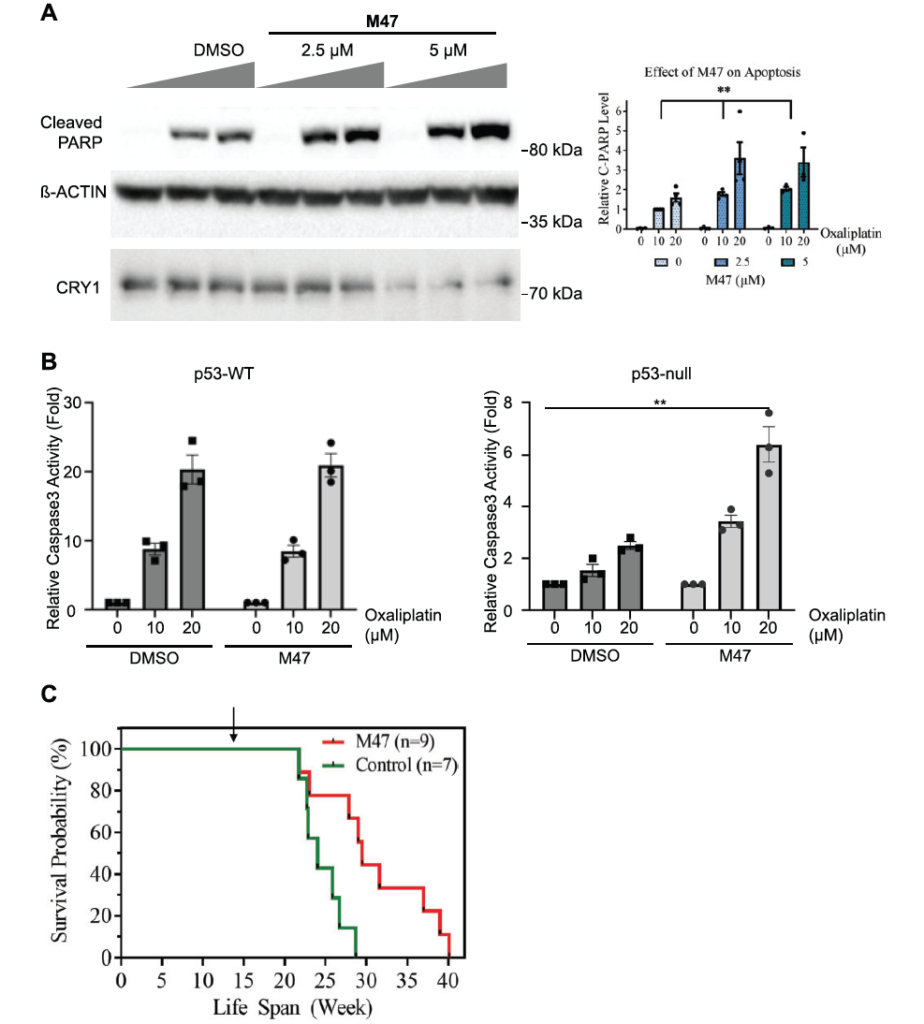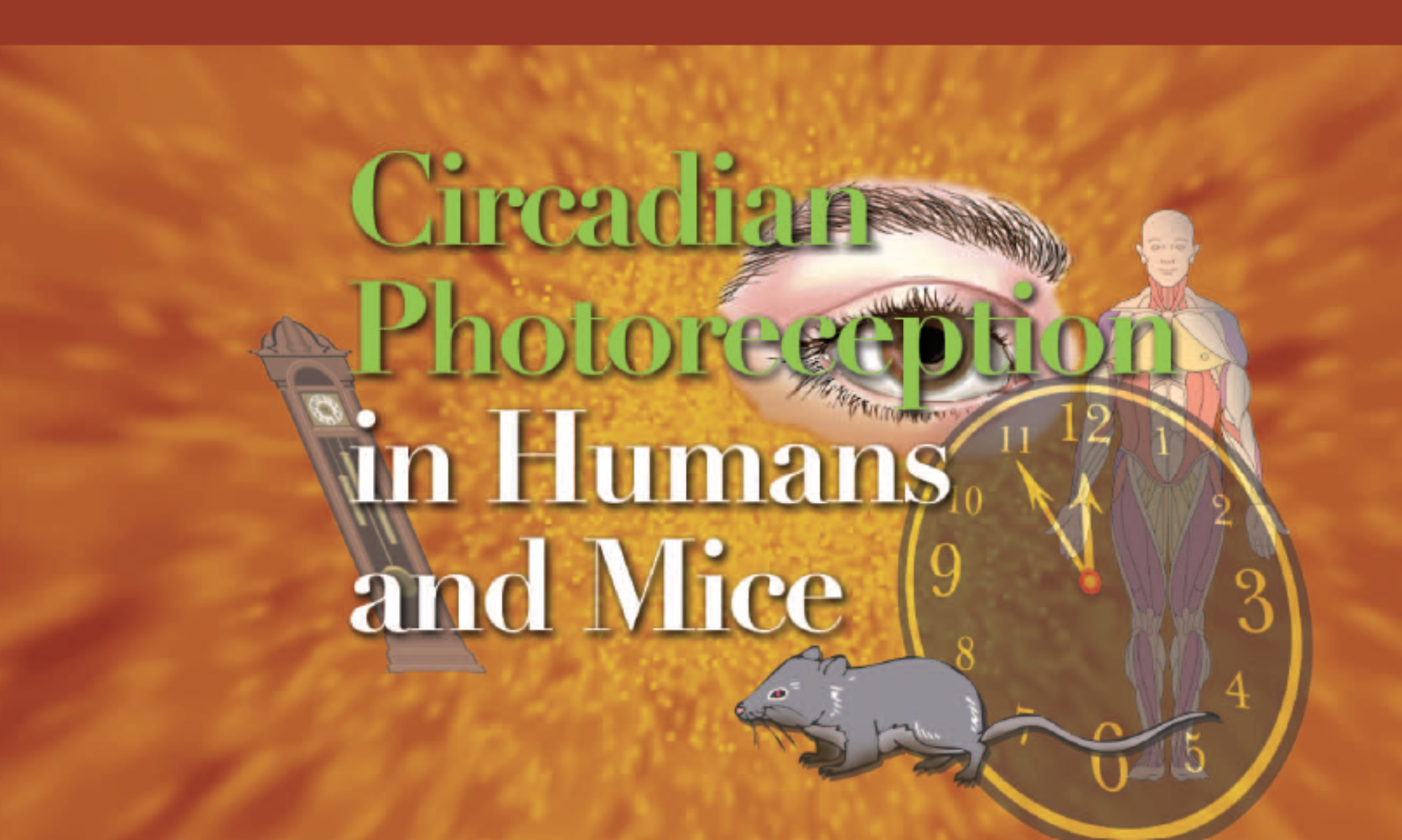Şerefs’ paper is published in Nature Communications. This paper is entitled “Discovery of a small molecule that selectively destabilizes Cryptochrome 1 and enhances life span in p53 knockout mice” and describes discovery of a molecule, M47, selectively reduces half- life of mammalian Cryptochrome 1.

(A) Ras pT24 transformed p53 null MSF fibroblast cells were treated with 0, 10 or 20µM oxaliplatinand incubated for 24h. Then either DMSO or M47 was added and incubated for 16h. Cells were lysed, and protein levels were analyzed by Western blot. In each case, M47 increases the cleaved PARP protein level and decreases CRY1 levels. Bar graph was drawn normalizing to 10µM dosage of oxaliplatin (Data represent the mean ± SEM, n=4, **p=0.0051versus DMSO control by two-way ANOVA). (B) Measurement of Caspase-3 activity in WT or p53-null Ras-transformed MSF cells (p53-null) treated with oxaliplatin in the absence (DMSO) and presence of M47. Cells were treated with DMSO or M47 (5 μM) for 24h and then 0, 10, 20 μM oxaliplatin for 16h. Caspase-3 activity in total cell lysates was measured using the Caspase-3 substrate, Z-DEVD-R110. The activity was normalized to total protein concentration and presented as fold activity to 0 μM treated samples. The results are the average of 3 biological replicates± SEM (**p=0.0077 versus M47 treated cells with one-way ANOVA with Dunnet’s post hoc test). (C) M47in p53-/- mice increases age-adjusted incidence of survival. Kaplan–Meier survival analysis (log-rank test) of the time of death with evidence of tumors showed significant differences between vehicle-treated p53-/- and M47-treated p53-/- (**p=0.0068) (n=9 for vehicle-treated and n=7 for the M47 treated). Arrow indicates M47 administration (18th week).

